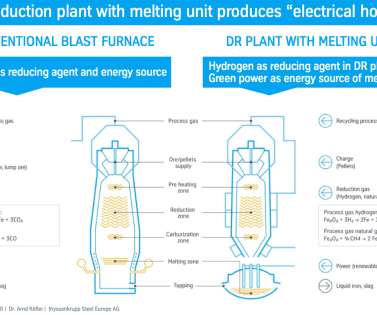thyssenkrupp greenlights construction of €2B hydrogen-powered direct reduction plant for low-CO2 steel
Green Car Congress
SEPTEMBER 9, 2022
As part of its tkH2Steel transformation project, coal-based blast furnaces will be replaced by hydrogen-powered direct reduction plants. Thus, the Duisburg steelworks is continuing to boil steel as in the past—but with hydrogen and green power instead of coal. —Martina Merz, CEO of thyssenkrupp AG. With its capacity of 2.5

































Let's personalize your content